TEST
System Parameters
In order to send RDT messages or tasks to Calidus 3pl-Mobile, the Calidus 3pl system must be informed that the Interface to Calidus 3pl-Mobile is present. This is enabled via the ‘RDT Interface’ flag on system parameters
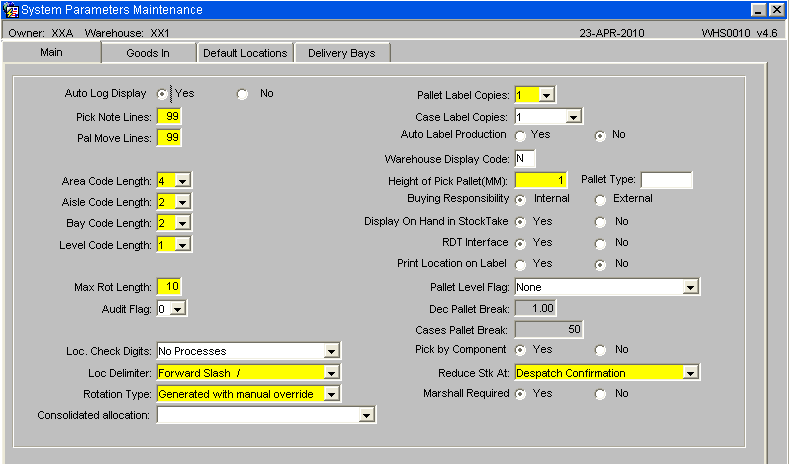
Click on the Default Locations tab to identify the default locations required.
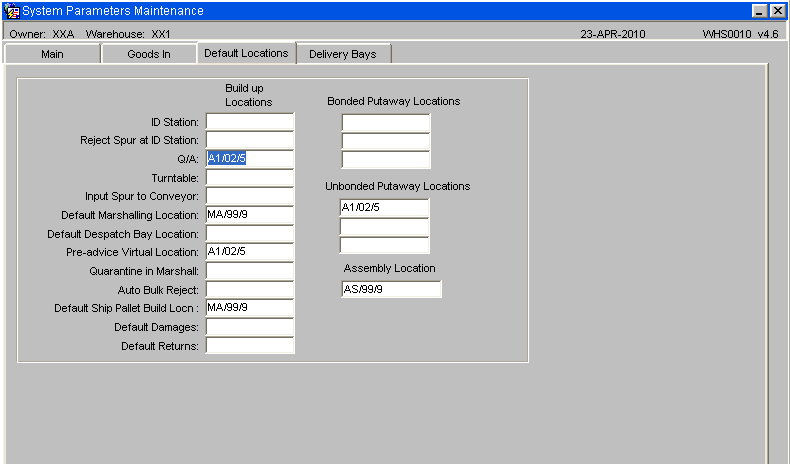
Build up location 3 (Q/A) is the default putaway location, if the putaway algorithm finds no locations. Location 6 is a Default Marshalling Location, used by pick list and allocation.
Owner parameters
An RDT Interface flag also exists per Owner or Stockist. With this flag, we are able to determine whether, even if the warehouse allows RDT operations, the owner allows RDT operations.
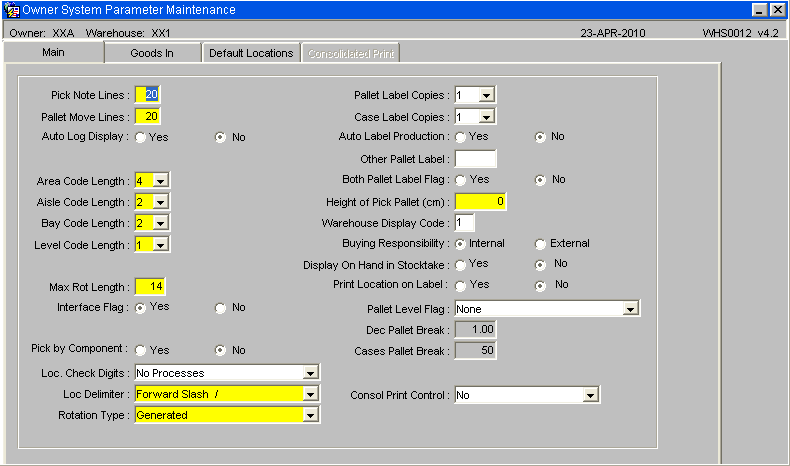
In all ways, this bank of screens operates in the same way as the System parameters screens, described above.
RDT Status Maintenance Screen (WHS7920)
This screen is the major control screen for RDTs in Calidus 3pl

Each line controls not only the running of the update process in Calidus 3pl, but also the availability of the functions to standard Calidus 3pl processing. So, for example, if the Pallet Receipt Update availability flag is ‘Y’, you have the ability to send receipt preadvice messages to WCS. If it is ‘N’, you can’t send those messages. The use of the availability flags in the system will be explained for each sending process described in the next section. Use ‘Start Interface’ to start the RF interface programs. Use ‘Stop Interface’ to start the RF interface programs. The light below these buttons indicates whether the interface is on or off.
The use of this screen should be limited to System Administrators only.
Sending Data
Standing Data tables
See the C3PL-M Setup guide, for details of how this data is used in the Calidus 3pl-Mobile.
Various data tables on Calidus 3pl need to be sent to Calidus 3pl-Mobile. These tables are:
- Employees
- Truck Types
- Pallet Types
- Location Types
- Reason Codes
- Receipt Types
- Aisles Status/Aisles
- Stock information
The maintenance screens for these tables can be found (by default) on the Warehouse maintenance menu. The exception to this is the Stock Maintenance screen, normally found on the Stock menu.
To perform an initial send of the data to Calidus 3pl-Mobile, enter the form and find data. Once found, click the Send button on the form, which will only be visible if the Interface flags for the owner and warehouse are enabled. The whole file will be sent.
Also, during normal use of the screens, any added or deleted data is sent to Calidus 3pl-Mobile, to keep the files accurate. Simply use the screen as normal, and the data will be sent, as long as the interface flags are turned on.
Putaway Location Being Assigned at the Point of Putaway
In order for a putaway algorithm to be executed at the point of a putaway scan, setup must be carried out on both the WMS and WCS.
WMS Setup
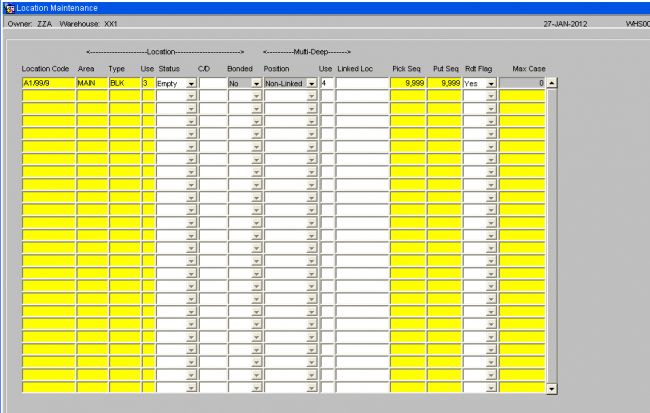
- A location must be set up with a loc use type of 3
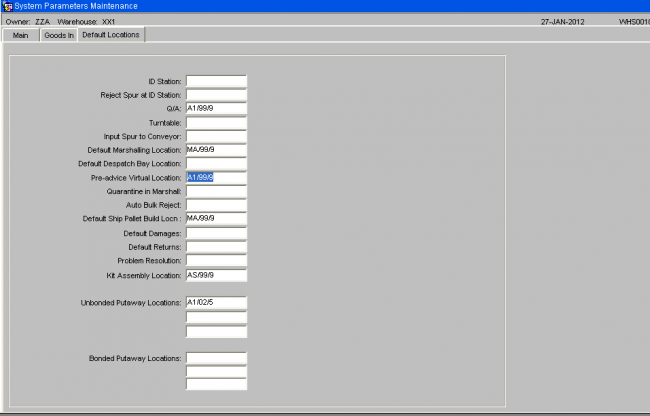
Set the location as defaults in both System Parameters and Owner Warehouse Parameters.
- The parameters to be set are: Q/A and Pre-Advice Virtual Location
Warehouse Rules Maintenance
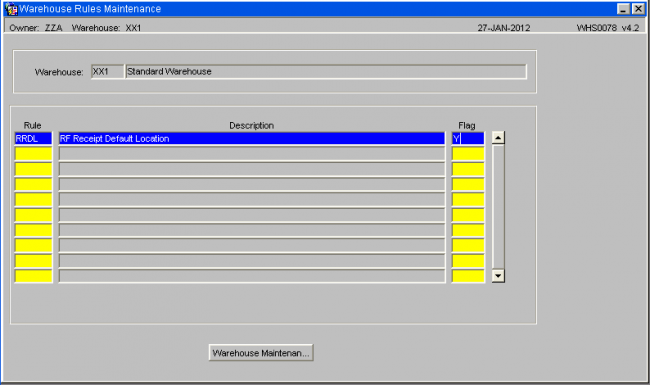
- Warehouse rule RRDL must be set to ‘Y’.
Stock Maintenance
Stock Maintenance / Further Stock
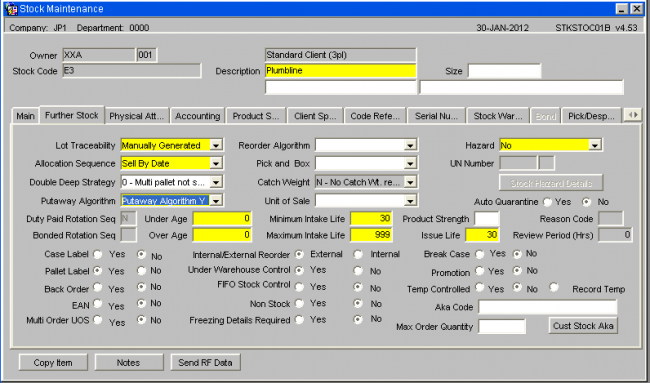
- The Auto Putaway Algorithm must be set to a value of 'Y'
WCS Setup
Warehouse Maintenance / Putaway/Moves/Replen
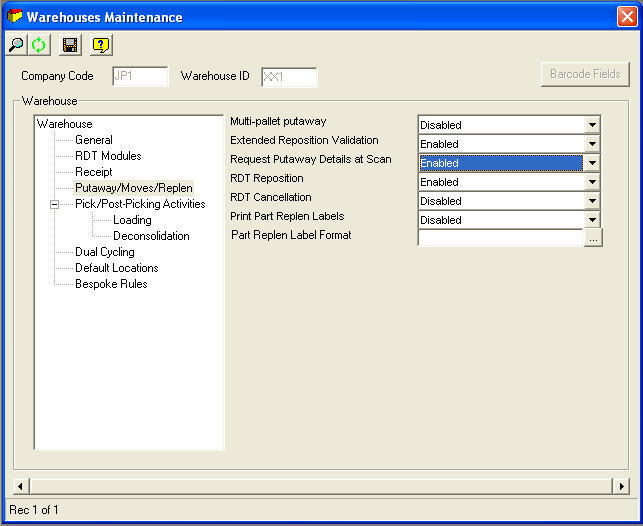
- Set ‘Request Putaway Details at Scan’ to Enabled.
Removing Dropped Sessions from WCS
In certain circumstances it is possible for the WCS to register RDT sessions as being active on the system even though they no longer exist. Though infrequent they are generally caused by the handheld device crashing while in use.
The implication of this is that a session is still registered on the WCS and the Wave Link server, and can prevent the full quota of genuine users to log on to the system.
- The first step is to ensure that the session has been dropped, physically check that the RF handheld is not logged in and then check within WCS Maintenance / RDT Comms / Employee Activity. The Activity column should show idle.
Identify the Employee and the RDT session